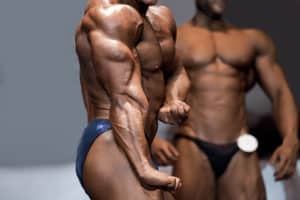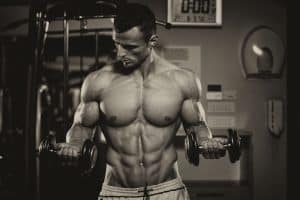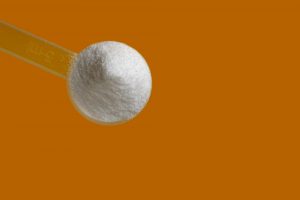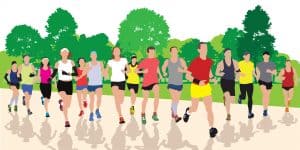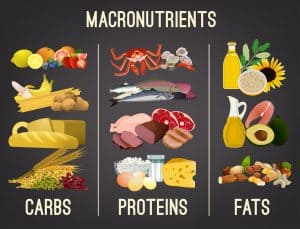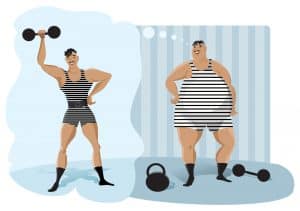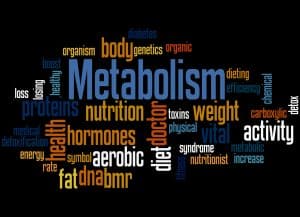During my years of training at the gym, the rumors around the dreaded 40th birthday weren’t positive. I was afraid of the “inevitable”—more flab, fewer gains, and zero energy.
Although, as I am approaching 40 and continue to train, these were not the results I’ve received. I learned that subtle shifts in the time-tested combination of training and nutrition could set me up for years to come.
This article, of how to get shredded after 40, explains what you need to maintain a successful strength training program “over the hill”.
What Happens as We Age?
The societal expectations around age can have the 40-somethings feeling sorry for themselves. However, it doesn’t have to be as harrowing as people make it out to be.
Changes do occur but are not instantaneous. They develop gradually, and if you understand the basics, it’ll set you up to conquer the challenges ahead.
Here are the primary shifts that occur as we age.
Hormone Production
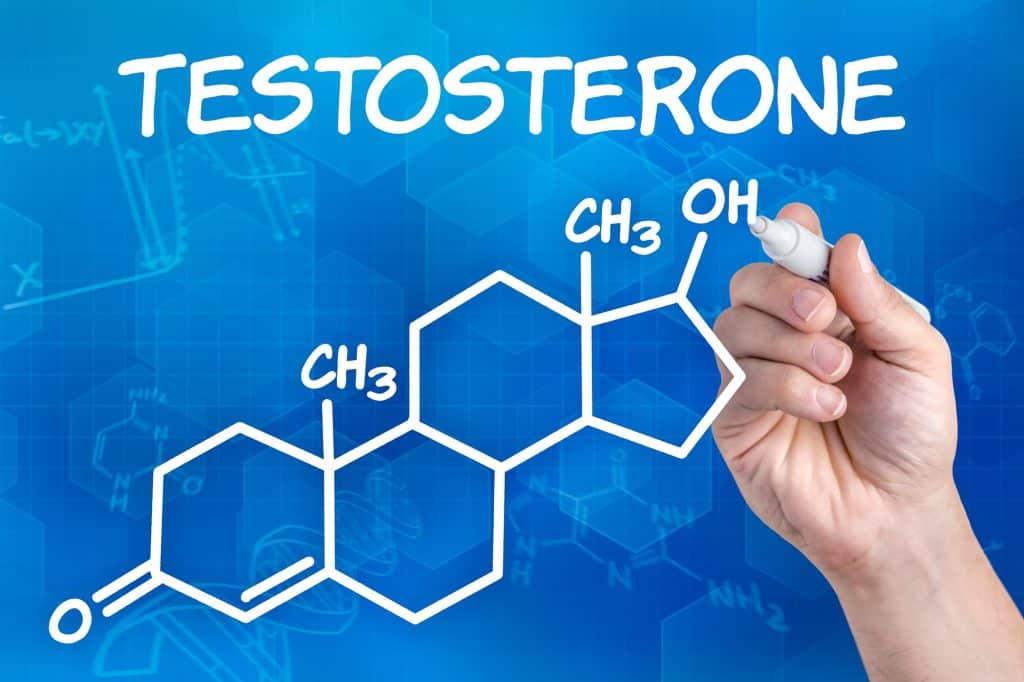
Let’s run through the “big guns” of the hormone world:
1
Testosterone
It’s the cardinal androgen as far as men are concerned. Testosterone affects muscle growth, fat loss, as well as your sex life.
By the time you reach your 40s, this male hormone is declining by up to 2 percent annually. Its downward trend can lead to deficient T-levels—dubbed as “andropause.”
For men, this imbalance can cause:
- Gains in body fat.
- Loss of muscle mass.
- Decrease in strength.
- Reduction in bone density.
- Changes in mood.
- Sleep disruption.
- Tiredness and fatigue.
- Lack of libido.
Women also require testosterone—albeit in lower volumes. A 40-year-old female has 50 percent less circulating testosterone in comparison to what they had in their 20s.
Research is limited, yet studies on low T-levels in women indicate connections with:
- Weakening of the muscles.
- Depression.
- Osteoporosis.
- Increases in body fat.
Low energy levels.
2
Growth Hormone
The growth hormone (GH) is produced by the pituitary gland—the master of the endocrine system.
GH plays a critical role in regulating metabolism, cognitive function, and aerobic capacity. Working closely with insulin-like growth factor (IGF-1), GH also helps monitor insulin sensitivity.
Levels peak at puberty, remain stable in your 20s, but from 30 onwards it decreases by 15 percent for every decade.
Both genders produce GH, although levels are actually higher in women—at least double. As a result, this hormonal downturn can affect females to a more noticeable degree. However, either sex can experience:
- Increase in fat mass.
- Deterioration of lean muscle.
- Loss in body strength.
- Decrease in bone density.
- Poor memory.
3
Insulin
This hormone allows our body to use sugar (glucose) for energy and helps regulate blood sugar levels.
Many adults succumb to poor dietary choices (more on that later) and less activity as they age. Studies show this can lead to insulin resistance, meaning the body requires more to function correctly.
While it can result in type 2 diabetes, strength training, and aerobic exercise can vastly reduce your chances of this condition.
4
Estrogen
Known for its role in women’s reproductive health, estrogen is also found in men—it’s converted from testosterone. Just over three-quarters of this female-centric hormone is produced through a process called aromatization.
Taking into consideration its origins and the fact T-levels decline, naturally, you would assume estrogen also follows in a downward direction. It does, but not in unison, which leads to an increase in the ratio of estrogen to testosterone.
This is the outcome:
- Body fat accumulation.
- Erectile dysfunction.
- Low energy.
- Reduced libido.
- Depression.
- Gynecomastia (man boobs).
In women, estrogen works to ensure fertility by stimulating egg development. This hormone also influences bone strength, boosts collagen content, and regulates metabolism.
By a woman’s late 30s, the quality and quantity of egg follicles diminish, signaling a decline in estrogen and ovulation. Because of this, menstrual flow and cycle length can become erratic.
Most won’t be worried about menopause just yet. However, the transition period, known as perimenopause, could start to take effect in your 40s.
Variations in estrogen levels can lead to:
- Vaginal dryness.
- Heavy periods.
- Anxiety or stress.
- Loss of muscle strength.
- Decrease in metabolism.
- Loss of bone density.
- Feeling “off”.
Metabolism
It’s the process by which our bodies use energy, thus burns calories.
Muscle plays a major part in regulating metabolism. Hence, the more mass you have, the higher your BMR (basal metabolic rate). That is, the measure of how many calories the body needs to function for day to day life.
Therefore, the higher your BMR, the more calories you expend and the less chance you have of gaining weight.
The metabolic slowdown is a primary concern in terms of weight gain as we get older. Although BMR can differ from person to person, it’s deceleration typically follows in line with age.
As a consequence, when you arrive in the 40s, it indicates you can’t eat as you did in your 20s—something to pay attention to.
Especially females. With the onset of menopause, it’s typical for waist circumference and body weight distribution to change because of this.
Diet and exercise can influence this shift for the better.
If you’re interested in working out your BMR, here’s a user-friendly calculator for you to try out.
Training Tips to Get Shredded After 40
Instead of throwing in the towel, we can continue to workout. Which, as it appears, is exactly what you should be doing.
Research indicates the best way to get shredded after 40 is through combining exercise and diet. Strength training is the first part of the equation.
In the gym, this translates into working with the changes, not against them—three to four days per week, at least.
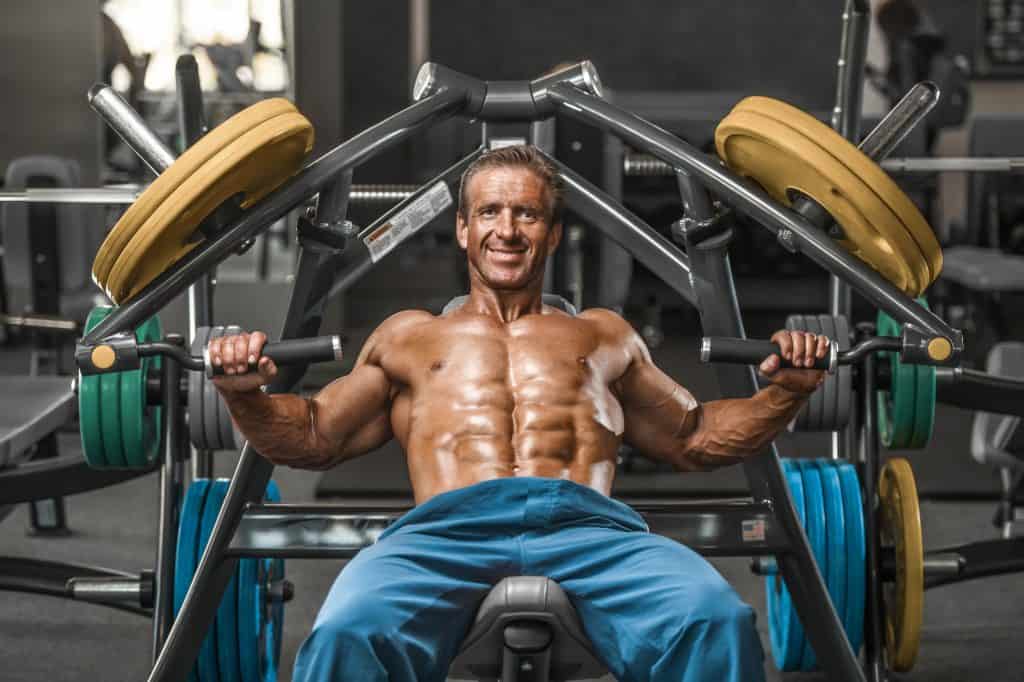
1
Make Muscle a Priority
Retaining, and gaining, muscle at this time in your life is essential to ward off the effects of shifting hormones.
Prioritizing strength training can:
- Boost your metabolism.
- Release feel-good endorphins.
- Develop better body mechanics.
- Improve bone density.
- Benefit balance and coordination.
- Increase your confidence.
High vs. Low Volume
Volume is a term to describe your total number of sets and reps, plus weight load. Workouts combining high volume with low intensity or low volume with high intensity can both be beneficial for maintaining muscle.
However, one of the biggest mistakes people make at this age is increasing volume in an effort to combat the hormonal changes. As you get older, excessive high volume workouts can increase your risk of injury and, or, recovery times.
Don’t be stubborn and push yourself to over-train. Instead, work out smarter, not harder. You can still whip out a deadlift, bench press or squat, but use lower volumes than you’re accustomed to.
Lessen your sets but take them to the point of exhaustion—not total failure. Lengthen your rest intervals. Take advantage of machine work, and don’t forget your isolation exercises.
2
Rest and Recover
It’s also important to remember, your muscles need adequate recovery time to rebuild and grow. Rest days should be part of your plan.
To avoid overtraining, resist extreme levels of frequency, intensity, and volume (above) without sufficient recovery. If not, your performance can decrease drastically and leave you frustrated with your wasted efforts.
3
What About Cardio?
Naturally, when one is concerned about burning fat, they’ll turn to cardio. Most interpret cardio as a state where your energy output is consistent—for example, one hour on the treadmill at a particular pace.
With age, you have to be careful here. Going full-throttle with steady-state cardio can increase cortisol (a stress hormone), leaving you fatigued, overly hungry, and hanging onto fat. Testosterone may take a dip, and muscle can burn in the process.
Instead, focus on metabolic-boosting exercises where your energy output is varied. Keep that cortisol in check by performing short circuits, moving from exercise to exercise. Keep your rest in-between at a minimum.
If you don’t go beyond 1-2 times per week, you can still enjoy some low-intensity cardio options that keep you at a comfortable calorie deficit. Examples include light jogging, swimming, or hiking. For women, yoga or pilates may be a great low-intensity cardio supplement to your gym routine.
As we get older, low-intensity cardio does have its perks.
- Benefits insulin sensitivity—this study indicates that just one session of low-intensity cardio can benefit insulin levels for the next 24 hours.
- Improves balance—it becomes critical to avoid injuries from falling, such as fractures.
- Reduces belly fat—just like high intensity, taking it slower can still decrease waist circumference.
- More fun, less suffering—enjoying your workout will motivate you to keep at it.
4
Avoid These Workout Mistakes
Here are some mistakes to think twice about post-40:
- “Bro” splits—exercising too much and dividing your focus can put the body under a lot of stress—leading to an increase in fat and fatigue. Stick with full-body training instead, upper-lower body split, or push-pull-legs, for example, covering each muscle group per workout.
- Ditching warm-ups—they get the blood flowing, increasing your internal temperature. They also reduce the risk of injury.
- Neglecting your joints—one of the primary reasons we want to strength train is to protect our joints as we age. Make sure you avoid exercises that directly affect your joints like skull crushers. Also, make sure circuits don’t include high box jumps, for example, that put extra stress on your knees.
We published full training programs for lifters over 40 here.
Nutrition Tips to Get shredded after 40

Let’s go over some practical tips for how nutrition can support your gains without depleting energy or leading to fat retention.
- Eat plenty of lean protein—this should consist of chicken, fish, and non-fatty cuts of red meat. To prevent sarcopenia (age-related muscle loss), it’s suggested you consume at least 1 gram of protein per pound of body mass daily—this is the benchmark for protein synthesis.
- Fry less, grill more—lower your consumption of saturated fats. Grilling requires less oil, and to top it off, less cleanup.
- Track your macronutrients—a balanced meal consists of three main groups: carbohydrates, protein, and fat intake. Use the tracker above to monitor your activity levels as well, so you can adjust your calories accordingly using the below macro calculator.
- Enjoy healthy snacks—we all face scenarios where we can’t have our meal when we need to. Avoid dips in energy and reaching for bagged junk food by keeping nutritious eats around. Protein bars are an easy go-to option here.
Dietary Mistakes to Avoid
- Forgetting about fiber—doing so can lead to poor digestion and erratic blood sugar levels. It helps you eliminate waste, keeps you feeling full, and aids insulin. Think fruits, vegetables and legumes.
- Neglecting prep work—we can’t survive a nutritious diet without planning ahead. Prepare your meals in advance. Your work lunches will be ready to go, and you’ll be less tempted to pull around to the drive-through window.
Being tempted by restrictive dieting—trending diets may promise initial results, but gym-side it’s not so pretty. A low-fat diet, for example, is linked to lower testosterone levels in men. Not what you want when it’s already dropping.
Supplements to help you get Shredded After 40
Training habits and nutrition are important. It’s true. However, supplements can skyrocket energy, endurance, and growth to the next level.
The supplement scene is full of choices when it comes to age and bodybuilding. Here I focus on five favorites to get shredded after 40:
- Fish oil—high in omega-3 fatty acids, this oil keeps the heart in tiptop shape by lowering blood pressure. Reducing joint pain and inflammation are further post 40 plus points.
- Creatine—an amino acid the body produces. It raises energy levels and aids in workout recovery while preventing injuries.
- Vitamin D—it works hand in hand with calcium to strengthen bones. While adults tend to get enough calcium, many are deficient in this vital vitamin. It also has links with lifting testosterone.
- Whey protein—a kit bag essential for gym-goers—young or old. Whey is fact-acting and contains all the essential aminos to feed your muscles. It can help you reach your daily protein intake, plus it aids recovery and mass growth.
- Testosterone boosters—these aren’t synthetic steroids, but dietary supplements containing natural compounds—for example, zinc, magnesium, d-aspartic acid, and boron. They’re designed to work with your body to lift T-levels.
Conclusion
Symptoms of aging will come. But who’s to say we should suffer and give way to the fearful decline when we hit 40, or any age for that matter?
Don’t quit strength training, but consider longevity, instead of immediate reward, when thinking about muscle gains. Support your body through the age-related shifts with smart training techniques and realistic nutrition goals
Instead of getting sucked into how you should feel at any given age, you’ll have a shredded physique to support you in return.




